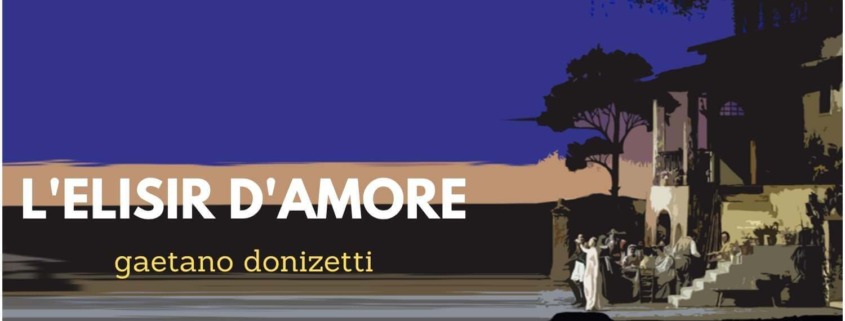UNA FURTIVA LAGRIMA- an aria from the opera Elisir d’amore
The online guide to Donizetti’s aria UNA FURTIVA LAGRIMA
Read Interesting facts and hear great YouTube Videos about the famous Aria “UNA FURTIVA LAGRIMA”.
If you want to hear more about the opera L’elisir d’amore, click on the link to the online guide
The aria – synopsis and background
Synopsis: Adina, who knows nothing about the death of Nemorino’s uncle, learns from Dulcamara that Nemorino has sold himself to Belcore because of her. The moved Adina repays the recruiting fee. Dulcamara wants to sell her a bottle, too. She just smiles and tells him that she wants to win Nemorino back only with her eyes and smile. Nemorino thinks he has spotted a furtive tear in Adina’s eyes when the many girls surrounded him.
Nemorino is a somewhat naive young man. In this aria, which is almost at the end Nemorine is for the first time happy when he finds out that the capricious Adina has fallen in love with him. The aria is written for a lyric voice. It is best when the tenor tries to fully adhere to Nemorino’s character without any heroic aspects. So the melody has to be sung dolce.
The aria is introduced by a bassoon solo. What makes this aria particularly beautiful, besides the grandiose motives, is that the first part of each verse is written in a minor key and the second part in a major key. This transition from pain to hope is wonderfully enhanced by the expressive instrumentation of bassoon and clarinet.
The aria – text of una furtiva lagrima
Una furtiva lagrima
Negl’occhi suoi spunto:
Quelle festose giovani
Invidiar sembro.Che piu cercando io vo?
Che piu cercando io vo?
M’ama, si m’ama, lo vedo, lo vedo.
Un solo instante I palpiti
Del suo bel cor sentir!
I miei sospir, confondere
Per poco a’ suoi sospir!
I palpiti, I palpiti sentir,
Confondere I miei coi suoi sospir
Cielo, si puo morir!Di piu non chiedo, non chiedo.
Ah! Cielo, si puo, si puo morir,
Di piu non chiedo, non chiedo.
Si puo morir, si puo morir d’amor
A furtive tear
In her eyes I cried:
Those festive youths
I seem to envy.What more do I seek?
What more do I want?
She loves me, she loves me, I see it, I see it.
Just for a moment
Of his beautiful heart to feel!
Confuse my sighs
For a little while to his sighs!
Feel the throbbing, feel the throbbing,
Confuse mine with her sighs
Heavens, you can die!I ask no more, I ask no more.
Ah! Heavens, one can, one can die,
I ask no more, I do not ask.
One can die, one can die of love
Written for the voice of a lyric tenor
The role of Nemorino is written for a lyric tenor. The lyric tenor has a soft, melting voice. The voice must be rich and agile in melodic creation. He can reach the high notes with ease and create a beautiful sound. The lyrical tenor must be able to sing both intimate pieces and more exciting pieces convincingly.
Famous interpretations UNA FURTIVA LAGRIMA
In 1901 Enrico Caruso sang this aria for the first time. It was his debut season at the Scala and Toscanini conducted. It was the biggest ovation that ever was heard in this theater so far. It became one of the most important operas in his career and at the Met. “Una Furtiva lagrima” was one of the first arias that Caruso recorded and it was perhaps the aria that became the most famous, along with vesti la giubba. In this recording (technically accompanied by a modern orchestra) the classical rubato can be heard, for example, on the second “che piu cercando io vo”, which, combined with a grandiose accelerando, is twice as long as Pavarotti’s eighty years later. The same can be said for the (wonderfully) long ritardando on “io la vedo”.
The 20th century saw the arrival of the tyrant Toscanini, who under the title of faithfulness to the original work, sorted out the singer’s rubato, which led to controversial discussions to this day. In the second part of the aria, Nemorino imagines holding Adina in his arms and feeling her heartbeat. Listen to Enrico Caruso sing this passage tenderly and then with a wonderful crescendo cheering “Cielo” without losing tenderness. The end of this aria is, in Kesting’s words, “the wonderful agility of the voice that can be heard; the Coloratura chains string the notes together like shimmering pearls. With the last phrase, Caruso goes beyond the bel canto without leaving the technical basis of classical “singing on the breath”. He sings the word “si puo morir” not like a tenor di grazia, but with a powerful crescendo. Caruso lets the voice swell very slowly, and then adds a fast but dominated vibrato: the sudden flare-up of a fire by a violent gust of wind.”
Una furtiva lagrima (1) – Caruso
and an interpretation by Luciano Pavarotti
Una furtiva lagrima (2) – Pavarotti
A third version by Jonas Kaufmann.
Una furtiva lagrima (3) – Placido Domingo
And finally a interpretation by Placido Domingo
Una furtiva lagrima (4) – Placido Domingo
Peter Lutz, opera-inside, the online opera guide to UNA FURTIVA LAGRIMA from the opera L’elisir d’amore.




Leave a Reply
Want to join the discussion?Feel free to contribute!